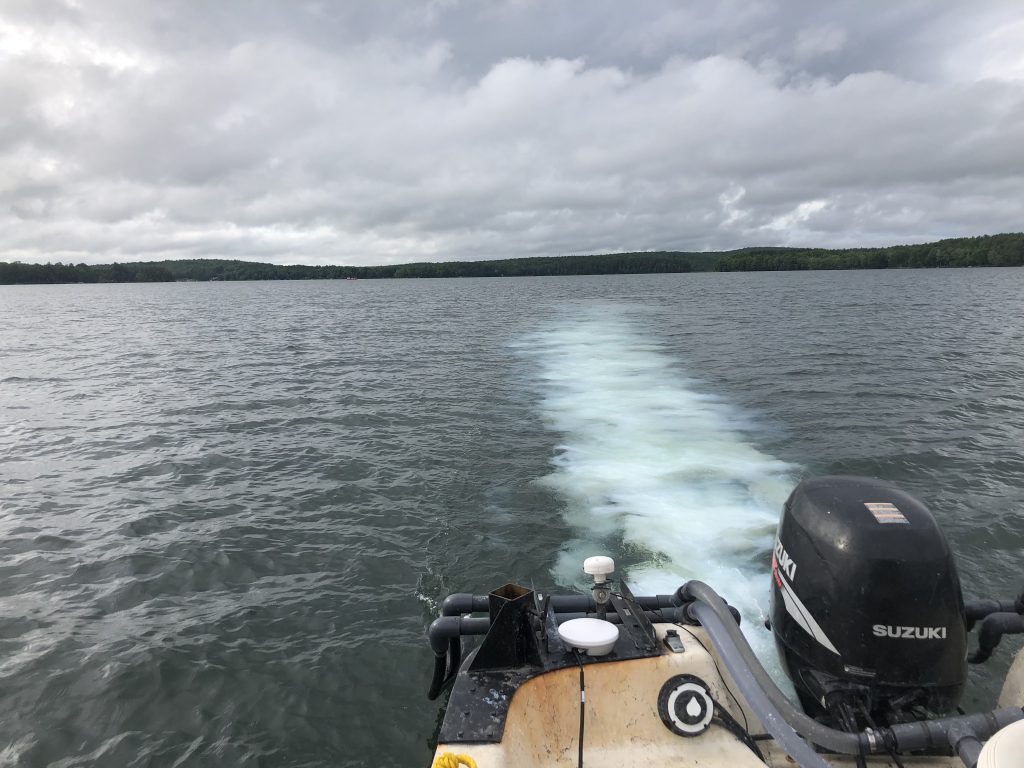
Long Term Phosphorus Inactivation Improving Water Quality Using Buffered Alum
How do you address the years of built up nutrients in lakes and ponds that are now fueling nuisance algal blooms that impair recreation, degrade water quality and impact aesthetics? Removing nutrient-rich sediments by dredging is one approach, but very often impractical from a financial and regulatory perspective, especially for larger waterbodies. Another successful and less disruptive technique is treatment with aluminum sulfate (alum).

Background Aluminum products, like alum, are commonly used in drinking water, wastewater and many industrial water treatment plants to remove phosphorus and suspended solids. Phosphorus is a key nutrient for algae growth and is often the limiting nutrient which controls the frequency, type and severity of nuisance blooms. The use of alum to control phosphorus in freshwater lakes, reservoirs and ponds began in the early 1970’s. To date, hundreds of lakes, reservoirs and ponds of varying sizes have been successfully treated to reduce the recycling and internal loading of phosphorus from the sediments.
Alum works by permanently binding with phosphorus in the water column and sediments, rendering it unavailable for biological use. Typical forms of available phosphorus in surface waterbodies include inorganic phosphates, iron-bound phosphorus and organic phosphorus. Aluminum from alum can bind or capture all of the available forms of phosphorus. Lower doses of alum can be used to target just the water column phosphorus or higher doses can be applied to also inactivate sources in the sediment.

The reaction of alum and water will generally increase acidity (lower pH). In order to apply the higher dose ranges of alum to a lake, reservoir or pond, it may be necessary to apply a buffer compound to maintain stable pH levels. There are various buffer compounds that can be used, such as lime or soda ash, but a popular buffer in many lake treatments is sodium aluminate, as it also will contribute to the aluminum dose.
While the phosphorus captured by alum is permanently unavailable for algae growth, the longevity of the alum treatment is dictated by dosing accuracy based on the amount of available phosphorus, the amount of incoming phosphorus that will replenish the system and potential leaching of phosphorus from deeper sediments (although that can be accounted for to some degree in the dosing calculations). Low dose treatments are generally designed to provide seasonal reduction of phosphorus, while higher dose treatments can reduce phosphorus levels for a few years to over 20 years.
Ticklenaked Pond is a 54-acre waterbody located in Ryegate, Vermont, which serves as a popular fishery and recreational resource. It has a maximum depth of 46-feet and an average depth of 16-feet. Ticklenaked Pond was listed on the State’s 303(d) List of Impaired Waterbodies for low water clarity, low dissolved oxygen and elevated pH. Severe cyanobacteria (bluegreen algae) blooms were common in the pond. After extensive assessment, the Vermont Department of Environmental Conservation (VT DEC) decided to use an alum treatment to complete the final phase of a multi-year restoration effort. Previous work had successfully focused on reducing phosphorus inputs from the watershed andthe time had come to address the internal phosphorus load in an effort to meet the State’s Total Maximum Daily Load (TMDL) goal for the lake.
SOLitude Lake Management is committed to providing full service lake and pond management services that improve water quality, preserve natural resources, and reduce our environmental footprint. Lake, pond and fisheries management services, consulting, and aquatic products are available nationwide. Learn more about SOLitude Lake Management and purchase products at www.solitudelakemanagement.com.









